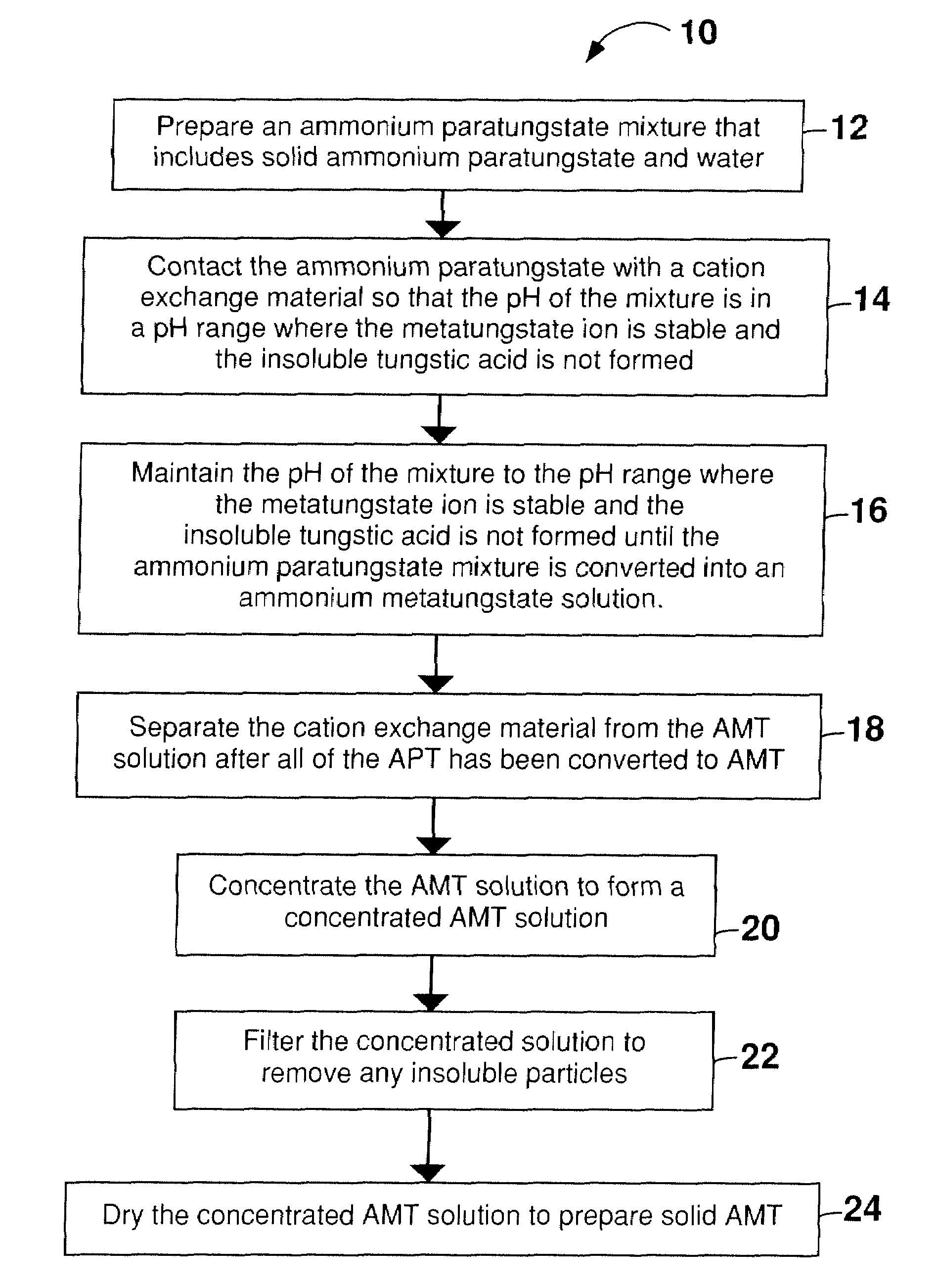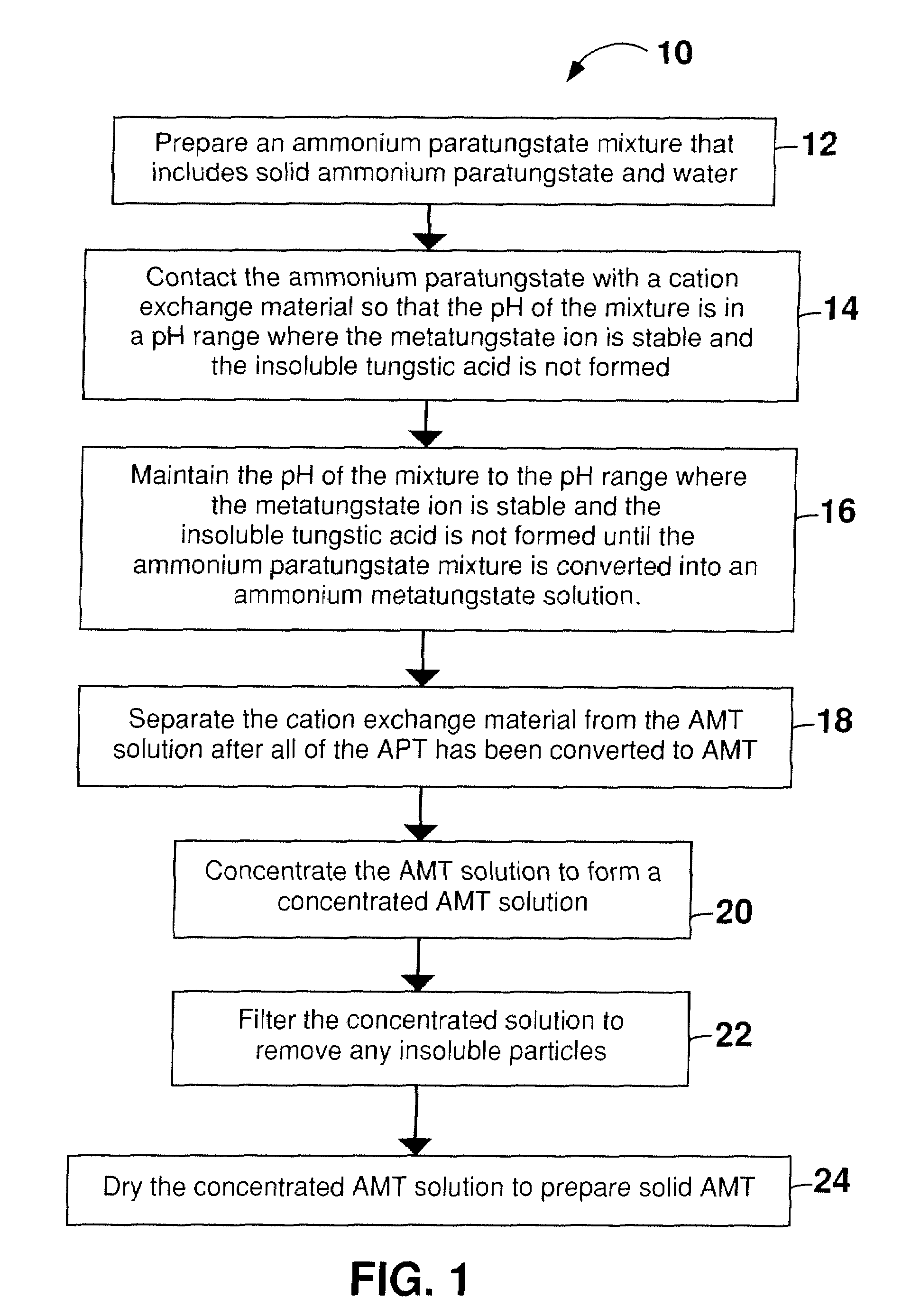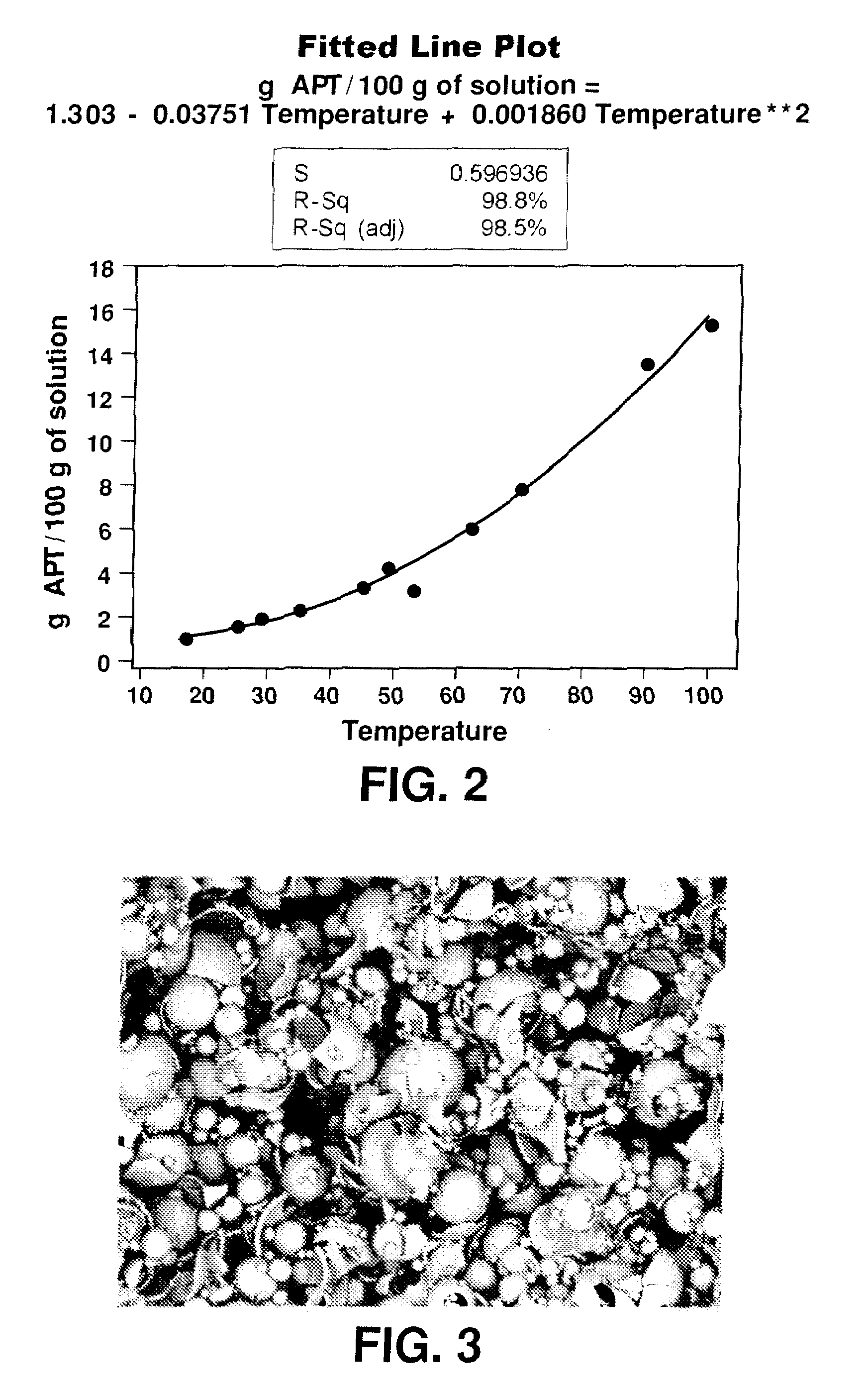Method for making ammonium metatungstate
a technology of ammonium metatungstate and ammonium metatungstate, which is applied in the direction of tungsten oxide/hydroxide, oxygen/ozone/oxide/hydroxide, other chemical processes, etc., can solve the problems of unstable organic phase, unstable apt, and high cost of ammonium metatungsta
- Summary
- Abstract
- Description
- Claims
- Application Information
AI Technical Summary
Benefits of technology
Problems solved by technology
Method used
Image
Examples
example 1
[0058]Before beginning the process to convert APT to AMT, a conventional pH probe was calibrated using standard solutions at pH 4 and 7. 3000 mL of double distilled water was heated to 90-95° C. Approximately 250 g of APT powder was added to the hot water, and the mixture was stirred using a stir bar. DOWEX® G-26 cation exchange resin was added incrementally in portions of approximately 10 g until the pH of the liquid portion of the APT / water mixture was between 3 and 4. The total volume of resin necessary to reach a pH between 3 and 4 was approximately 675 mL resin / Kg APT. As the APT dissolved in the acidified water, it reacted to form AMT, thereby allowing more APT to dissolve in the solution and drive the conversion of the APT toward completion. The dissolution and reaction of the APT initially occurred relatively quickly. As the reaction proceeded the reaction mixture changed from an opaque white slurry to a clear, slightly yellow or amber solution. When the solution appeared cl...
example 2
[0059]AMT was prepared from solid APT and water as described in Example 1, except that a total of 1050 g of APT was incrementally dissolved in 3000 mL of hot water (350 g / L). The time to convert all of the APT to AMT was about 6 hours. Although the complete conversion required 6 hours, the 350 g / L concentration of the APT mixture was well below the solubility of AMT in water, which is about 1635 g / L at 22° C.
example 3
[0060]The AMT solution prepared in Example 1 was filtered in an 18 cm diameter Büchner funnel to remove the cation exchange resin from the solution. The filtrate was then concentrated via evaporation at approximately 100° C. (boiling) until the solution density was 1.8 g / mL, thereby providing a concentrated AMT solution. The pH of the solution tends to become more acidic during evaporation. In order to prevent the solution from becoming overly acidic, and to prevent the precipitation of insoluble tungstic oxide, ammonium hydroxide (NH4OH) solution (10 mL of concentrated ammonium hydroxide diluted with double distilled water to 100 mL) was added dropwise using a pipette to maintain the AMT solution at a pH between 3 and 4. The ammonium hydroxide solution should not be added too quickly, as sudden localized fluctuations in pH may cause precipitation of insoluble tungstic oxide. The concentrated AMT solution was cooled. As necessary, the pH of the cooled concentrated AMT solution was a...
PUM
| Property | Measurement | Unit |
|---|---|---|
| temperature | aaaaa | aaaaa |
| temperature | aaaaa | aaaaa |
| pH | aaaaa | aaaaa |
Abstract
Description
Claims
Application Information
 Login to View More
Login to View More - R&D
- Intellectual Property
- Life Sciences
- Materials
- Tech Scout
- Unparalleled Data Quality
- Higher Quality Content
- 60% Fewer Hallucinations
Browse by: Latest US Patents, China's latest patents, Technical Efficacy Thesaurus, Application Domain, Technology Topic, Popular Technical Reports.
© 2025 PatSnap. All rights reserved.Legal|Privacy policy|Modern Slavery Act Transparency Statement|Sitemap|About US| Contact US: help@patsnap.com



